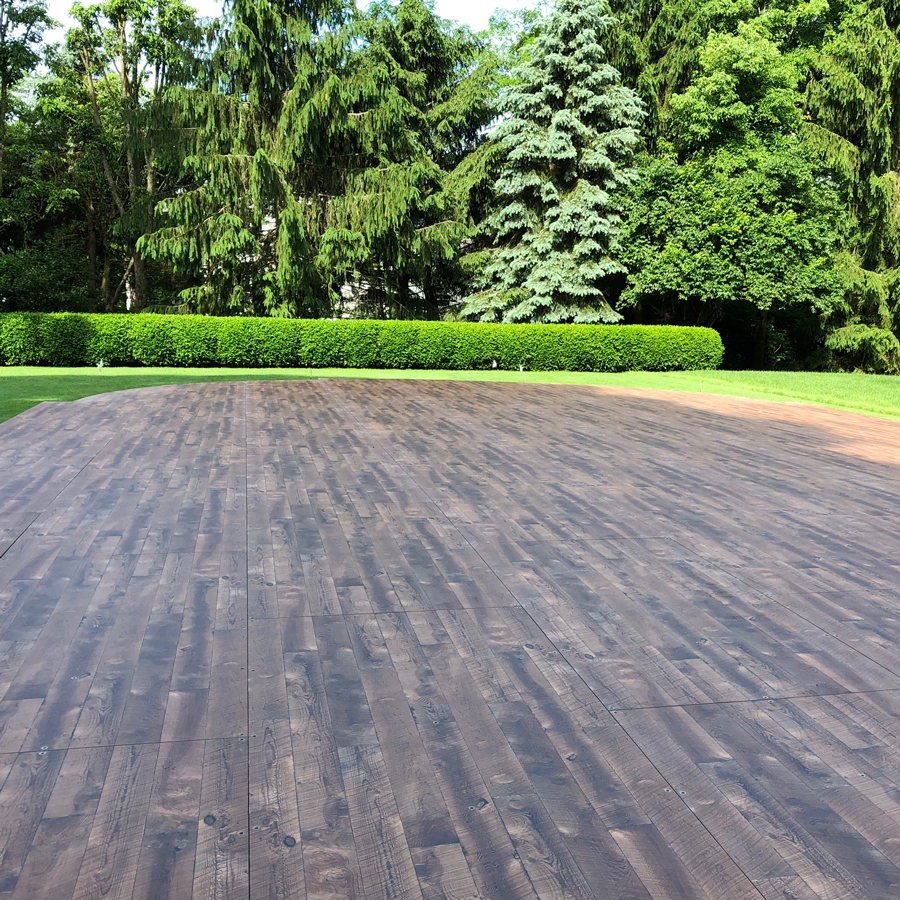Groove: Finessing the fit
Flooring and/or staging have some attractive advantages, such as enabling tent and event companies to become a one-stop shop. These products can also bring in new customers and larger events, says Lococo. And they can offer an additional revenue stream, says Cerasi.
“In some cases, you’ll make more off the flooring and subflooring than you would on the tents themselves,” he says. “But you’ll need a knowledgeable sales staff to effectively sell these.”
There are other factors to weigh before determining whether these products will fit your business model. Some considerations include how labor might be impacted, installer training, if there’s sufficient storage/warehouse space, additional equipment requirements and local and state regulations.
“Most floors are heavy, so make sure you have the right dollies or hand truck,” says Puff. “With staging, there are certain building codes that must be adhered to, such as guardrails, steps and so on. Dance floors should always have trim to protect against tripping hazards.”
Staging in particular requires careful questioning of the potential customer, such as how many people will be on it and what they’ll be doing, says Agler, explaining that extra bracing or legs may be required depending on the weight load and activity. Height is another concern since guardrails or steps might prove necessary. Still, she adds, the opportunities that come with staging are worth exploring, since “every event will have a focal table or band that will need to be above the crowd to be seen.” For example, Bil-Jax stages, adjustable to any height, can serve as risers for a head table or band, a tiered choir riser, a speaker platform or even a wide buffet table.
Site visits are often necessary, something Lococo advises for large jobs in particular.
The space where your customer wants the flooring set up may require extra steps,” he explains. “Rental companies should be sure to understand how to set it up best and what costs may need to be rolled down to the customer. This will allow a safe setup while ensuring the company charges the appropriate rates.”
There are product options aplenty, which can prove confusing when it comes to determining what to purchase. A good way to start is by asking other rental companies what they’re using and what they do and don’t like about it, says Cerasi.
As for calculating how much to acquire, Cerasi advises looking at the number and type of installs customers are requesting, tent sizes rented, and how many are typically installed at a given point in time. This is especially relevant to decisions around subflooring. If most installs are indoors, there may be little need for subflooring. Conversely, more outdoor events could increase the need, although not every flooring product requires a subfloor, even when installed outdoors.
Lococo says the average-sized dance floor runs around 20 by 20 feet, ample enough to accommodate around 75 to 85 dancers at once, making this suitable for a wedding of 150 to 250 people.
“We’ve done dance floors as large as 50 by 80 feet but more popular sizes are 20 by 20 feet, 20 by 24 feet and 20 by 28 feet,” he says. “I would start with no less than 50 4-by-4-foot sections, two corner kits and 12 pieces of male and female trim. You can always buy more and/or subrent.”
Finally, consider your market space, says Lococo.
“Know that while the profits on these types of products are often large, it does require a higher initial cash investment from your company,” he says. “[But] if you offer tenting or do weddings of any kind, then offering dance floor and tent flooring is a must. Brides will always want to have a celebration area to dance.”

